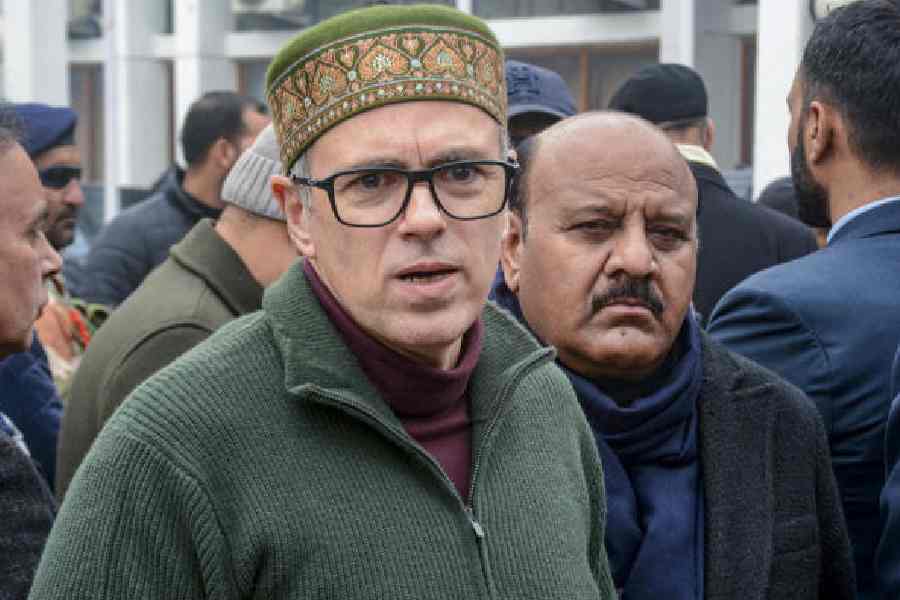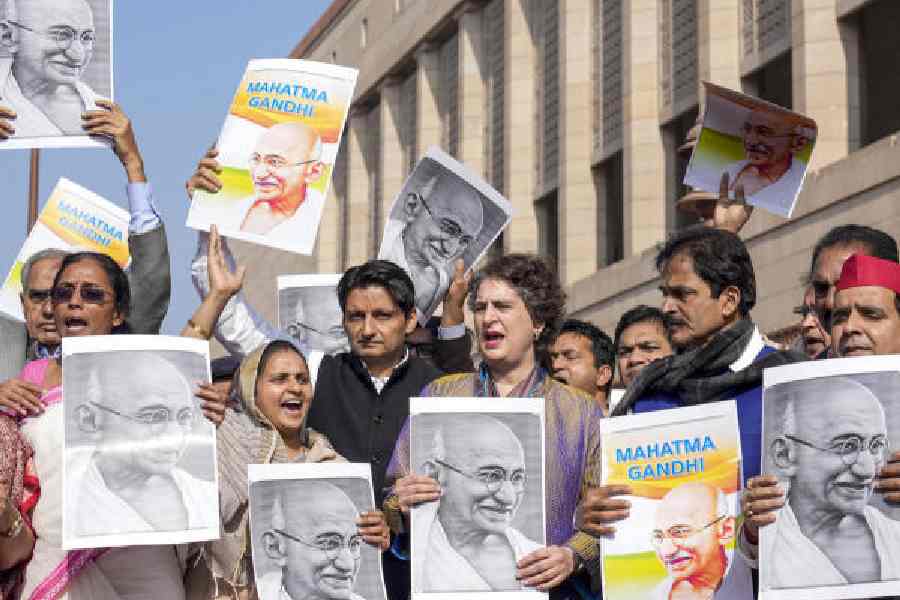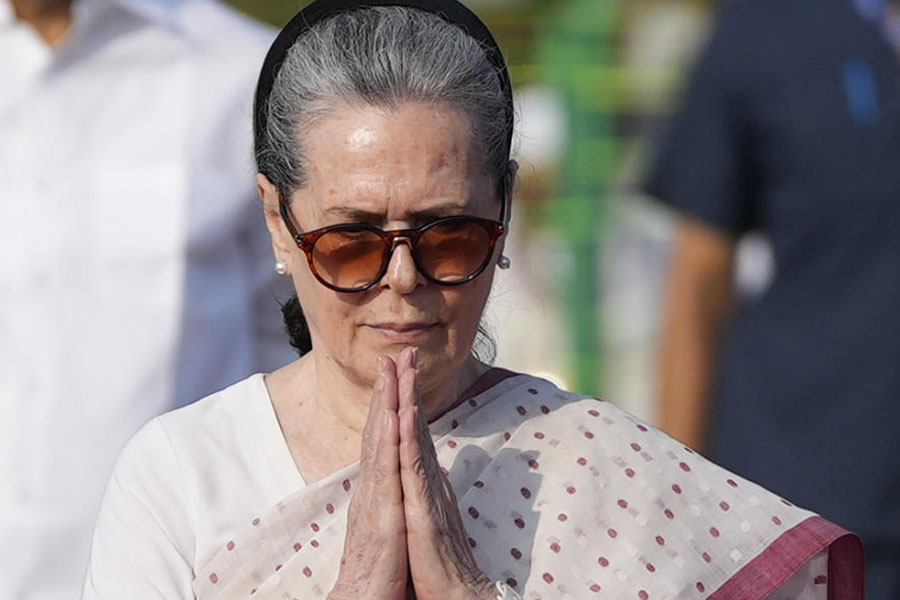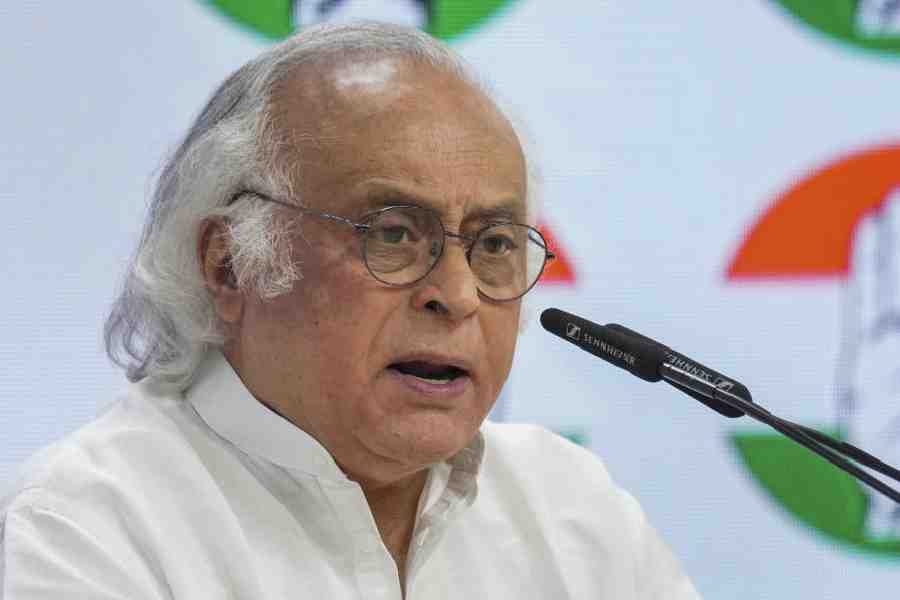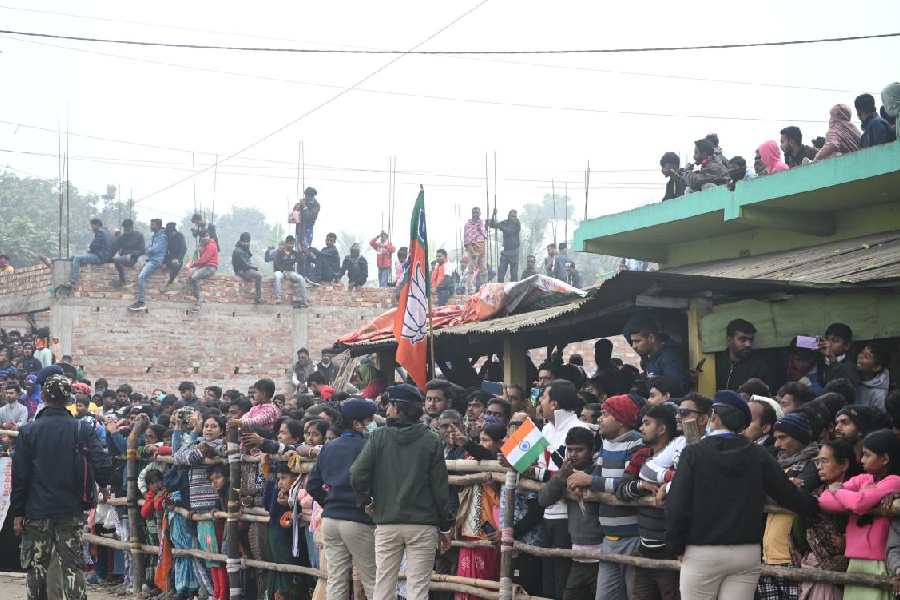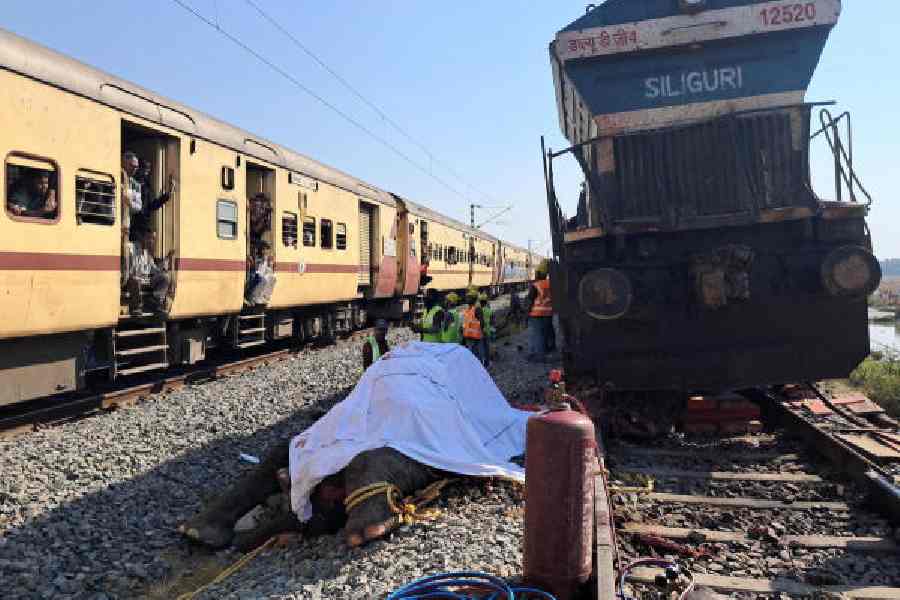 |
| People move to safer destinations on a boat after flood water inundated their village in Muzaffarpur on Monday. Picture by Prakash Kumar |
July 4: The death of two children today by drowning in flood water and Bagmati river breaching its embankment inundating hundreds of villages appear to be a prelude to the havoc the good monsoon promises in north Bihar plains nestled in the network of seven rivers and their tributaries — mostly originating from Nepal.
The two boys drowned in the swollen Gandak at Bagaha while Bagmati breached its embankments at Basghatta and Parsamala villages in Muzaffarpur district, gushing waters in several villages. The swollen Gandak, too, has caused floods in over 40 villages in Gopalganj district, forcing the villagers to flee and generating panic among others in the rivers’ catchments areas.
Muzaffarpur district magistrate Santosh Kumar Mall has sent additional collector Mohammad Kamruzzaman to flood-hit Aurai, Katra and Gaighat blocks to take stock of the situation. A zamindari embankment in Basghatta village on Lakhandai river under Katra block caved in. Besides, there was erosion at Mahuwara village under Aurai block on the banks of the Bagmati. A team of engineers of the water resources department rushed to the spot to plug the erosion.
“The weather office predicting good monsoon sounds pleasant to the ears and also brings smile on the lips of the farmers. But at the same time it snatches the sleep of our department’s officials. They get worried,” the water resources minister, Vijay Kumar Choudhary, said with a sense of helplessness writ large on his face.
“We do not remember when the state last received so much rain in the early days of monsoon like this year,” the minister said anxiously, announcing a compensation of Rs 1 lakh each to the family members of the kids who died in Bagaha.
The minister’s worry is not wide of the mark, given the fact that 68.8 lakh hectares of farmlands out of a total 94.16 lakh in the state are in the flood-prone areas. The state still has as much as 38.8 lakh hectares in the rivers’ catchments areas unprotected from the embankments. There are embankments to protect only 30 lakh hectares of land.
The river Kosi, which had caused unprecedented floods in five north Bihar districts in 2008, has changed its course eastward, putting pressure on the eastern embankment and posing the threat to Supaul, Saharsa, Araria, Purnea and Madhepura districts once again.
The Nepal Maoists’ obstruction to the Indian authorities’ bid to dredge the pilot channels between the eastern and western embankments to bring the wayward Kosi in the middle of it is aggravating the problem. The Indian authorities had a meeting with their Nepal counterparts on the issue on May 25. The Nepal government has also allowed the Indian authorities to dig pilot channels in the downstream of Bhimangar barrage.
Sources revealed that the local Maoists who had some sort of say in their government and were “not in control” of the Nepal administration were yet to allow the Indian engineers to begin dredging the channels.


